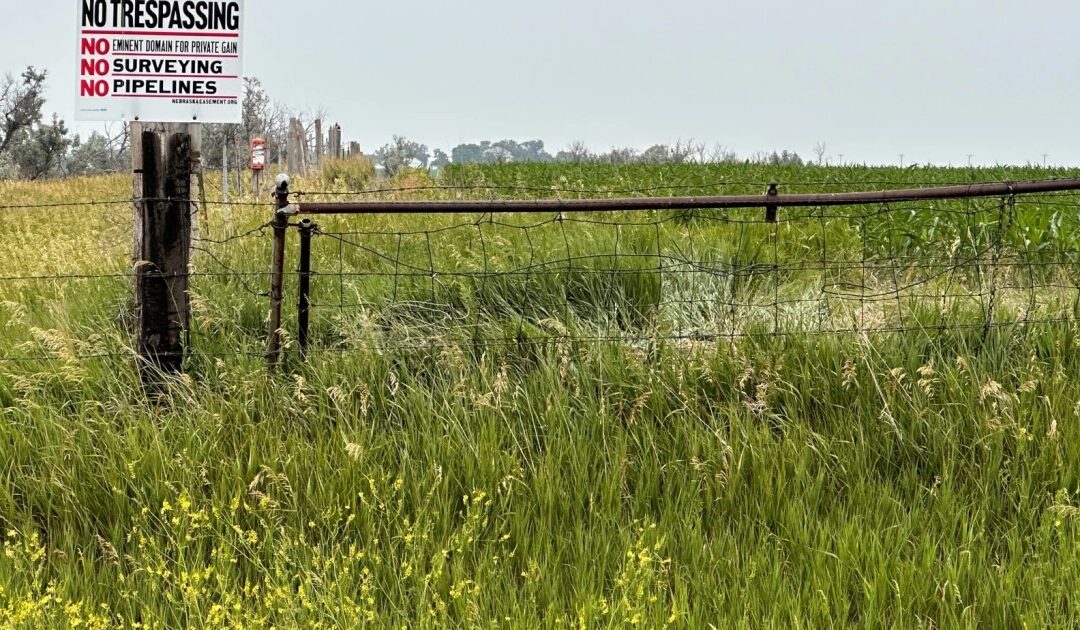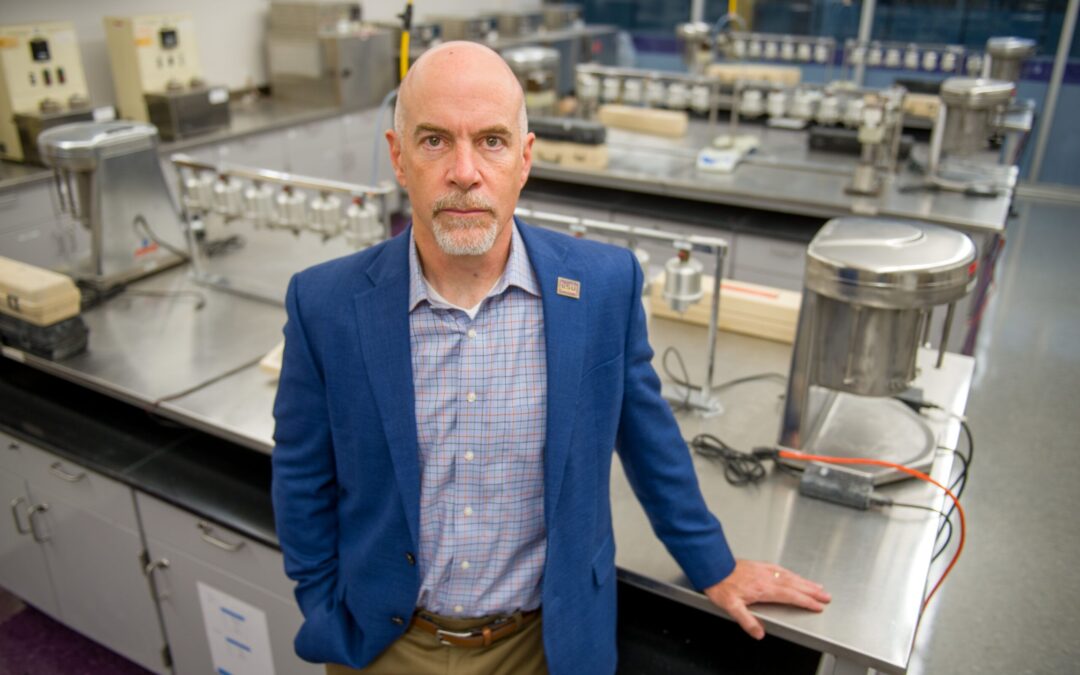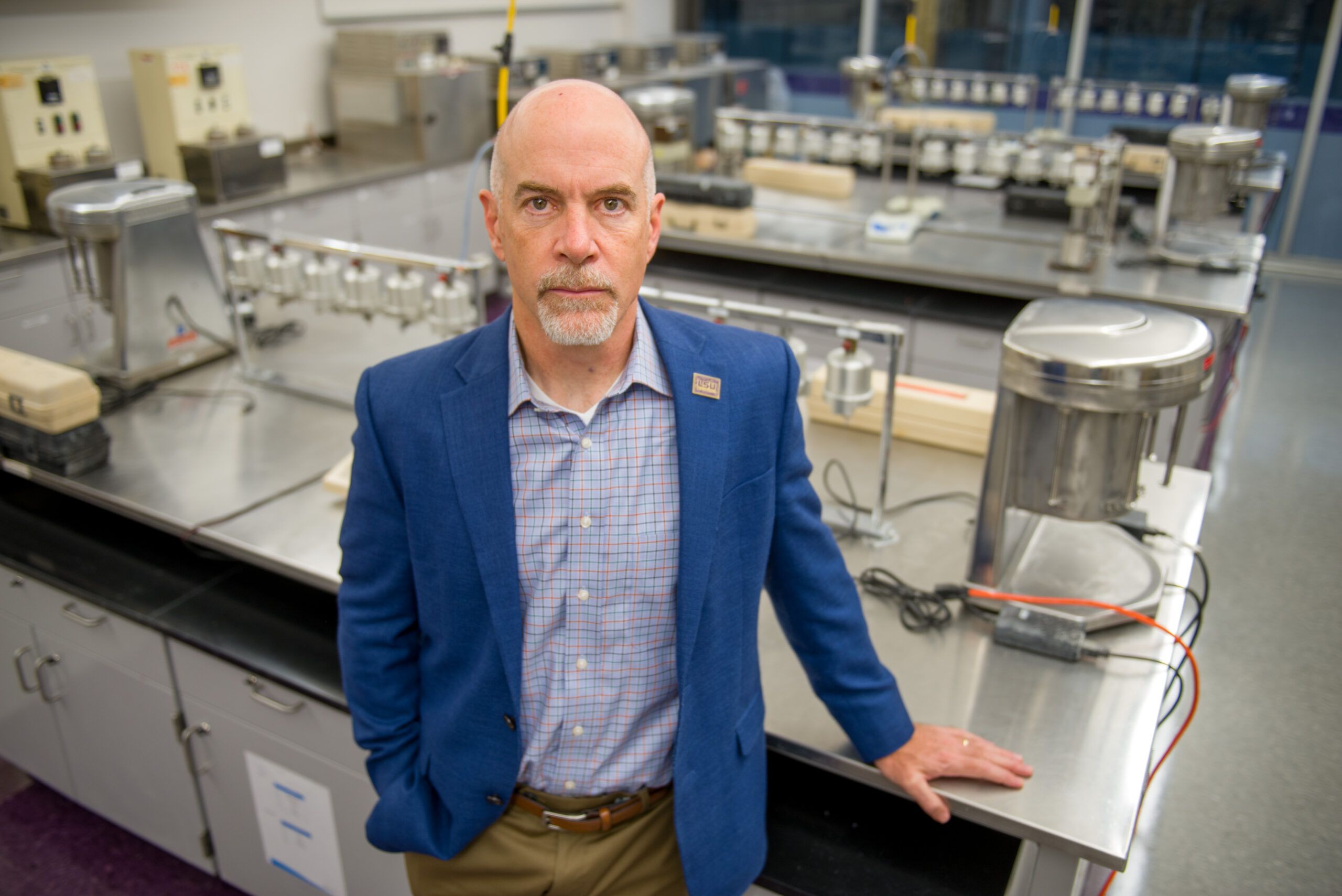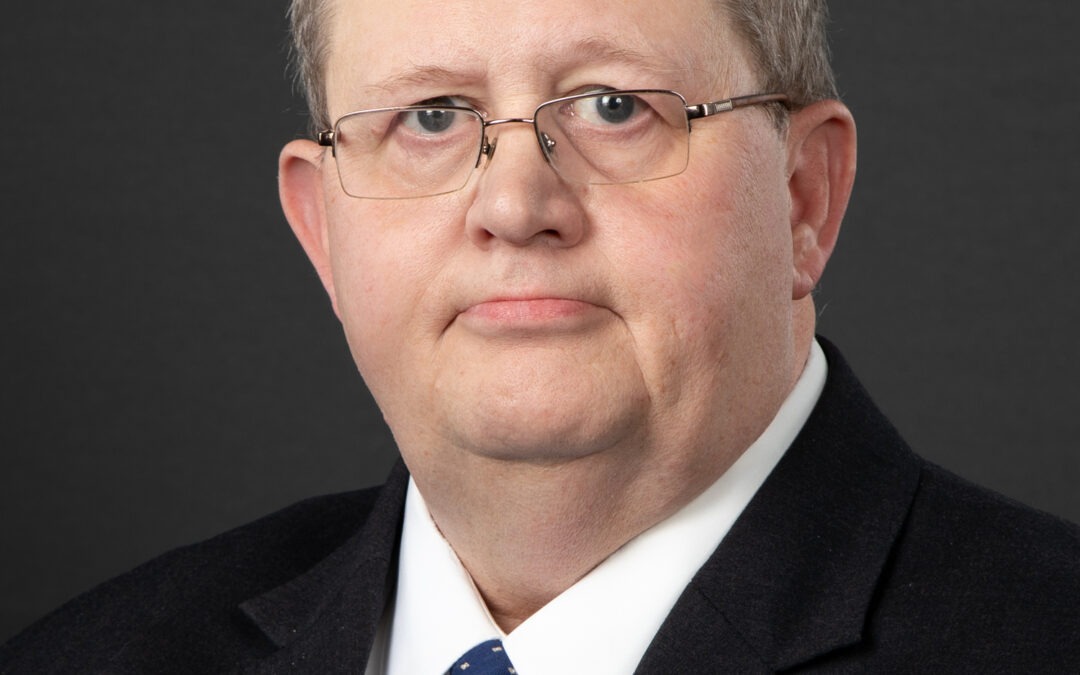
by O. Kay Henderson | Apr 3, 2024 | Featured
The Iowa House has voted to let landowners seek a court ruling now on whether carbon pipeline developers qualify for the government’s eminent domain authority to force unwilling property owners to let the pipeline on their land.
“We’re faced with lots of choices in this body. Few go to the heart of Iowa the way this does. Land is the original asset in Iowa. It’s in our souls. An unjust taking of land without remedy is not only irritating, it’s outrageous,” Republican Representative Charley Thomson of Charles City said. “Let’s give Iowans a remedy.”
Thomson said right now, property owners are forced to live in limbo for years — waiting for the Iowa Utilities Board decision on the project as well as the resolution of lawsuits expected to challenge that decision.
“That means for that entire period you have these Century Farms, landowners, people who didn’t especially want to have this pipeline going over their land and have some questions about it, not being able to get an answer on their constitutional law question,” Thomson said, “and not being able to sell their land at full value or make a decision on tiling or make a decision on estate planning.”
Republican Representative Steven Holt of Denison said Iowa landowners are pleading with elected officials to do the right thing. “For several years I’ve watched, I’ve listened and I’ve been deeply concerned,” Holt said. “I’ve watched landowners fighting to protect their private property rights…and I have been disturbed by that fact that others do not hear their pleas or the truth of their message.”
Representative Bobby Kaufmann, a Republican from Wilton, was the other lawmaker who spoke before the bill passed on an 86-7 vote. Kaufmann sounded as if he were speaking directly to Bruce Rastetter, the influential GOP donor and pipeline developer who owns Summit Carbon Solutions.
“Most importantly I have a message for those who would choose to attempt to use their money to influence this vote, for those who would attempt to use their money to prevent this vote,” Kaufmann said. “My message is: ‘Take your money and shove it!’”
Kaufmann said government doesn’t exist to make the confiscation of private property easier or cheaper for pipeline developers. The Iowa House has previously passed other proposals to set up pipeline regulations, but all have stalled in the Iowa Senate.

by Jordan Mason | Apr 3, 2024 | Featured
A bill approved by the Iowa House on Thursday would allow landowners who are subject to eminent domain requests by carbon dioxide pipeline companies to challenge the legitimacy of those requests in court earlier in the permit proceedings.
House File 2664 was approved by a bipartisan, 86-7 vote. Its future in the Senate is unclear.
It is the latest attempt by the House to aid landowners who object to Summit Carbon Solutions’ proposed use of eminent domain to build a sprawling pipeline system that would transport captured carbon dioxide from 30 ethanol plants in Iowa to North Dakota for underground storage.
If the Iowa Utilities Board grants the company’s request, landowners who have refused to negotiate easements for the project voluntarily would have to give up the land use at a price set by a government board.
A bill the House adopted last year would have required Summit to obtain voluntary land easements for 90% of its route before being eligible for eminent domain. The Senate did not take it up.
The new bill the House approved Thursday would not, itself, limit eminent domain for the pipeline projects. It is meant to expedite a court decision about whether eminent domain is allowable — a decision that under current rules might come many months after state regulators issue a permit.
The bill would allow court challenges before permits are issued, at the request of affected landowners or the companies that propose the projects.
“For that entire period, you have the century farms, landowners, people who didn’t especially want to have this pipeline going over their land and have some questions about it, not being able to get an answer on their constitutional law question and not being able to sell their land at full value or make a decision on tiling or make a decision on estate planning for all that period of time,” said Rep. Charley Thomson, R-Charles City, who is an attorney and managed the bill. “This bill corrects that.”
Summit began its pipeline permit process with the Iowa Utilities Board in August 2021. A year later in August 2022, it began notifying the board of properties that might be subject to its eminent domain requests. Now, about 19 months later, the board is poised to decide those requests, which represent about a quarter of its initial route in Iowa.
The board has declined say whether Summit’s project benefits the public in a way that makes it eligible for eminent domain.
“This legislation simply allows both landowners and companies the opportunity to have a declaratory judgment up front on the constitutionality of an eminent domain request, before precious time and money are wasted,” said Rep. Steven Holt, R-Denison, who has been a leading voice against eminent domain for carbon dioxide pipelines. “This legislation would allow landowners a little peace of mind, getting to know up front the validity of an eminent domain request so that they could plan accordingly, as opposed to waiting and fighting for years, their land in limbo, their futures in doubt, their lives full of tension and fear, while they plead with their elected officials to hear them.”
The legislation is opposed by Summit, the Iowa Renewable Fuels Association and several biofuels companies, according to lobbyist declarations. The Iowa Farm Bureau Federation did not declare its opposition or support.
Seven House Republicans voted against the bill: Michael Bergan of Decorah, Tom Determann of Clinton, Chad Ingels of Randalia, Brian Lohse of Bondurant, Norlin Mommsen of DeWitt, Matt Rinker of Burlington, and David Sieck of Glenwood.
The scope of Summit’s project has expanded in recent months after another company, Navigator CO2, abandoned a similar proposal. That has led Summit to ink agreements with most of the ethanol plants that had intended to connect to the Navigator system.
Summit’s proposal has grown to about 2,500 miles of pipe in five states to transport carbon dioxide from 57 ethanol plants. The company was initially denied permits by state regulators in the Dakotas, but North Dakota is reconsidering a modified plan. Summit has said it will reapply in South Dakota with a different route.
Today’s breaking news and more in your inbox

by Nancy Dugan | Apr 3, 2024 | Featured

Autumn View from Fire Point at Effigy mounds National Monument, photo by National Park Service
Nancy Dugan lives in Altoona, Iowa and has worked as an online editor for the past twelve years.
Disclosure: Dugan has filed several objections into the Summit Carbon Iowa Utilities Board dockets in opposition to the pipeline. Her most recent objections can be found here and here. She has neither sought nor received funding for her work.
In September 2023, Bleeding Heartland posted estimates of proposed water use for thirteen partner ethanol plants along the Summit Carbon pipeline. The estimates were based on the testimony of James “Jimmy” Powell, chief operating officer for Summit, and they included the Absolute Energy St. Ansgar facility, which Summit Carbon announced had been added to the route in June 2023.
But much has changed since that story was published. The number of ethanol plants now on the proposed Iowa route has risen to 30 with the inclusion of the POET and Valero facilities.

During his September 5 testimony, Powell explained that water demand for each of the carbon capture projects will depend on the production volume at the facilities. “They’ll range from 20 gallons a minute to 120 gallons a minute,” he said. Additionally, in a November 2023 Des Moines Register article, Sabrina Zenor, director of stakeholder engagement and corporate communications for Summit Carbon, stated that ethanol plants expect overall water use to increase by less than 10 percent for the purposes of carbon capture.
That figure jibes with the only water permit granted for carbon capture by the Iowa Department of Natural Resources (DNR) to date. However, the Register article also stated that Summit is “unable to say exactly how much water the Iowa plants will use because that’s impacted by seasonal temperatures, the volume of CO2 being processed and water quality.”
In May 2023, the DNR granted Lawler SCS Capture, LLC a permit to withdraw water from a Devonian Limestone well in Chickasaw County, Iowa “in the maximum quantity of 55.9 million gallons per year at a maximum rate of 100 gallons per minute throughout each year for carbon capture-related purposes on said land.” The well is located on land owned by Homeland Energy Solutions in Lawler, Iowa. Homeland, a Summit Carbon partner, is capable of producing 200 million gallons of ethanol each year according to its website.
The Nebraska Corn Board estimates that it takes about three gallons of water to make one gallon of ethanol. That would mean that Homeland uses roughly 600 million gallons of water each year, placing its water use estimate of 55.9 million gallons per year for carbon capture at under 10 percent of that figure.
WATER ESTIMATES: A MOVING TARGET
Summit Carbon’s Minnesota Otter Tail to Wilkin Project Route Permit Application provides more detailed information on water use for carbon capture. It notes, “In general, less water is needed during cooler seasons or periods of time.” The application also states, “The Applicant is evaluating the need to appropriate water for dewatering, dust control, and hydrostatic testing at the capture facility.” (page 134)
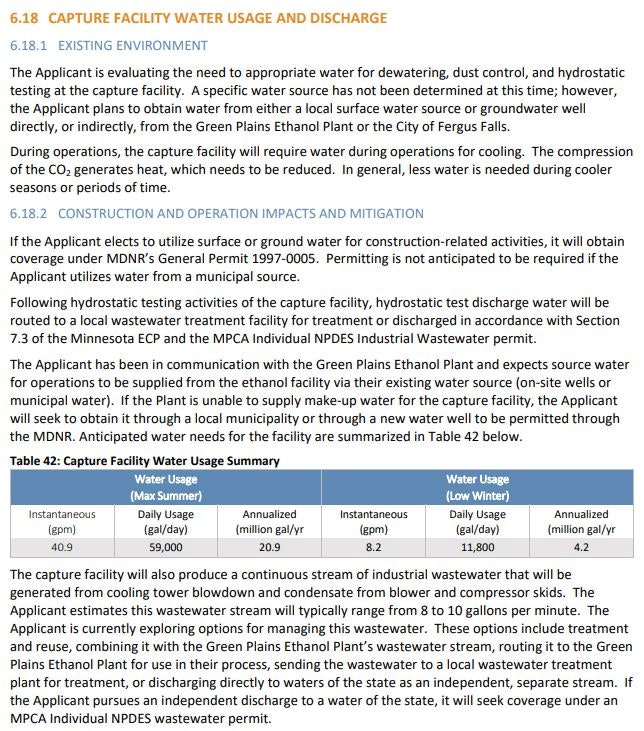
The median of 20 to 120 gallons of water per minute, Powell’s estimate of facility usage, is 70 gallons of water per minute. It is difficult to calculate with any precision just how much water Summit Carbon will use to capture CO2 at its 30 partner ethanol plants in Iowa. Hypothetically, assuming the 30 plants are operational around the clock, 365 days a year, yields an estimated withdrawal rate of more than 1.1 billion gallons per year. Assuming these plants are operational 24/7, 365 days a year, Bleeding Heartland calculated the following:
- 70 gallons of water per minute multiplied by the 30 ethanol plants in Iowa is equal to 2,100 gallons of water per minute.
- 2,100 gallons of water per minute multiplied by 1,440 (the number of minutes in a day) is equal to 3,024,000 gallons of water per day.
- 3,024,000 gallons of water per day multiplied by 365 (the number of days in a year) is equal to 1,103,760,000 gallons of water per year.
That is more than 1.1 billion gallons of water for CO2 capture alone for the 30 ethanol plants along the proposed Summit route in Iowa. However, it is important to note that all of the plants will likely have down times and will therefore not be continuously operational. In addition, these figures are estimates for carbon capture only and are subject to updates and modifications.
Bleeding Heartland previously reported on a March 11 Worth County Board of Supervisors meeting, where Summit representative Kaylee Langrell announced that ethanol plants along the proposed Summit route in Iowa plan to produce sustainable aviation fuel (SAF), ostensibly in partnership with SAF plants. SAF paths include the production of methanol using CO2 and hydrogen, as well as other pathways, such as that introduced by Twelve, which can produce sustainable aviation fuel using CO2 and water. Also as previously reported, Summit Carbon’s partner plants are pursuing the alcohol (ethanol) to jet path.
This will likely add two additional layers of water use: one for increased ethanol production, and another for sustainable aviation fuel production. Speaking at an American Carbon Alliance event in August 2023, Summit founder Bruce Rastetter estimated that ethanol plants along the proposed pipeline route would grow by 25 percent:
We’re in a competition with electric vehicles, and we have to lower the carbon footprint, work with the oil and gas industry to maintain the combustion engine, and the reality is, every one of our plants that’s signed up with us has engineering plans being drawn up today to grow by 25 percent … And ultimately jet fuel is the big market coming up for ethanol, that if you have lower carbon scores, these plants will qualify for sustainable aviation fuel, which is a 50-billion-gallon market compared to 15 billion gallons on the combustion engine today.
If the pipeline is built and Rastetter’s prediction is correct, the amount of water needed to produce ethanol at these plants will increase by 25 percent.
And that, in turn, will increase the amount of water needed for carbon capture and sequestration by 25 percent, with the above estimate based upon Powell’s testimony rising from 1.1 billion gallons to nearly 1.4 billion gallons annually (1,103,760,000 + 275,940,000 = 1,379,700,000).
TAKING A RUN AT WATER USE CATEGORIES
Additionally, as Bleeding Heartland discussed here, the Iowa Farm Bureau Federation submitted Exhibit E into the original Summit Carbon docket (HLP-2021-0001) on March 14. Using a methodology recently published by the University of Illinois, the Farm Bureau found that with the addition of the Absolute Energy facility in St. Ansgar in June 2023, the POET facilities in January 2024, and the Valero facilities in March 2024, the estimated amount of CO2 produced for the Iowa portion of the newly proposed Summit route rises from 3,619,969 annual metric tons to 10,101,880 annual metric tons, a nearly three-fold increase in CO2 volume.
Newly announced structural changes to the pipeline also play a role. The affidavit of Timothy Johnson, a senior research and policy analyst at the Farm Bureau, outlined the calculations. This rise in CO2 volume could impact many aspects of the project.
The Farm Bureau’s March 14 Motion to Reopen the Record asks that Summit Carbon be required to provide updated information about the expanded pipeline project in Iowa Utilities Board docket No. HLP-2021-0001 “other than the physical addition of laterals and trunk lines to expand the route, which will be addressed in separate dockets.” The board has yet to rule on this motion. If granted, it might yield more concrete information from Summit to allow for a better understanding of water use and other critical issues, although the Farm Bureau’s detailed motion does not specifically raise the water issue.
As Bleeding Heartland previously reported, a 2021 study titled “The water footprint of carbon capture and storage technologies” documents the industry’s potential to massively deplete water supplies. That study by University of California, Berkeley researchers explained, “Large-scale deployment of carbon capture and storage could double the water footprint of humanity.”
Bleeding Heartland has tentatively identified six categories of water use associated with the proposed Summit Carbon pipeline, many of which this article does not address.
- Water needed for construction of the pipeline and associated facilities.
- Water needed for the carbon capture facilities.
- Water associated with energy required to operate the pipeline and associated facilities.
- Water needed to increase ethanol production at partner plants.
- Water needed for sequestration and enhanced oil recovery.
- Water needed for other commercial applications associated with the proposed pipeline, such as the production of aviation fuel.
INCREASED ETHANOL PRODUCTION
Using the Iowa Farm Bureau’s Exhibit E, and excluding the POET facility in Hudson, South Dakota from the chart, the 30 ethanol plants along the Iowa route produce approximately 3.185 billion gallons of ethanol annually according to the Farm Bureau’s research. A 25 percent increase amounts to an annual production increase of roughly 796,250,000 gallons of ethanol.
This means that at present, when taken together, the 30 facilities along the route use roughly 9.555 billion gallons of water each year to produce ethanol, although some of this may include recycled water. If all of these facilities increase production by 25 percent, then they will use an additional 2.389 billion gallons of water each year.
- 3.185 billion gallons of ethanol times 3 (the number of gallons of water used) = 9.555 billion gallons of water annually.
- 796,250,000 gallons of ethanol times 3 = 2.389 billion gallons of water annually.
As previously reported, Summit partner Gevo expects to use 300 million gallons of water per year, or 700 gallons per minute, at its planned Lake Preston, South Dakota Net-Zero 1 plant and an adjacent green hydrogen facility known as the Dakota Renewable Hydrogen Project. Gevo plans to produce some 65 million gallons of aviation fuel and alternative forms of gasoline and blendstock on an annual basis. The Net-Zero 1 facility will use ethanol to manufacture aviation fuel.
The Gevo figures provide a glimpse into the water-intensive processes associated with aviation fuel production, but much remains unknown about the processes that will be employed in Iowa.
The Dakota Renewable Hydrogen plant will be capable of producing eight tons of hydrogen a day according to a November 3, 2023, press release from Accelera by Cummins, which is providing the electrolyzer technology for the 20-megawatt facility.
“In terms of hydrogen production, while our capacity can reach a peak of 8 tons per day, our actual usage remains more conservative,” explained Heather Manuel, vice president of corporate communications for Gevo, in a January 29 email. “We anticipate utilizing 6 tons daily in the final stage/finishing process, where hydrogen reacts with hydrocarbons to reduce olefin content in the SAF, ensuring it meets specifications.” Manuel did not specify what percentage of the 300 million gallons of water needed per year will be used to manufacture hydrogen.
According to the World Resources Institute:
The U.S. aviation industry has set a target to reach net-zero carbon emissions by 2050, primarily through the use of so-called “sustainable aviation fuels” (SAF). One of its key levers to achieve this goal is a generous tax credit in the Inflation Reduction Act for sustainable fuels that reduce greenhouse gas emissions by at least 50% compared to petroleum jet fuel.
But new guidance laying out how fuel providers will measure emissions reductions in order to receive this tax credit flies in the face of stated climate goals.
The guidance, released on December 15, 2023, may extend tax credits to fuel made from corn ethanol or vegetable oils – despite strong evidence that these crop-based “biofuels” actually increase net emissions while diverting valuable cropland away from food production.
END NOTE: THE VALERO CHARLES CITY WATER PERMIT ISSUE
On March 18, the Charles City Council postponed its vote to approve a water usage agreement with Valero Renewable Fuels Company, LLC, which would have increased rates for Valero and allowed it to withdraw additional quantities of water from the municipal water system. According to the Agenda Item Summary for the meeting, Valero sought to increase its water usage from “1.3 million gallons per day, 35 million gallons per month, 420 million gallons per year” to “2 million gallons per day, 58 million gallons per month, 470 million gallons per year.”
A passage from the proposed Water Usage Agreement between Valero and Charles City follows:
During condition when the supply of water to the water system becomes depleted causing the City Council to declare a public emergency water shortage under Chapter 93 of the Charles City Code of Ordinances, the City is authorized, after giving notice and opportunity for hearing to Valero, to reduce the flow of water to Valero proportional to the reduction in water sought from the community through the implementation of the measures described in Chapter 93, Charles City Code of Ordinances
Chapter 93 of the Charles City Code of Ordinances can be found here. Section 93.05 states the following:
93.05 REDUCTION IN FLOW OF WATER TO ANY CUSTOMER. The Superintendent is authorized, after giving notice and opportunity for hearing, to reduce the flow of water in any manner not in accordance with this chapter.
Iowa Code section 455B.266 governs emergency conservation measures when a water shortage occurs in the state. It prioritizes uses for human consumption over uses for “manufacturing or other industrial processes.” Section 455B.266(1)(a) requires the DNR to investigate and, if appropriate, consider implementing the priority allocation plan after the receipt of a petition “by twenty-five affected persons or a governmental subdivision requesting that the priority allocation plan be implemented due to a substantial local water shortage.”
On February 1, the Iowa Renewable Fuels Association announced that ethanol production in Iowa reached a record 4.6 billion gallons in 2023. The association announced on February 2 that biodiesel production in Iowa remained steady at 350 million gallons in 2023.
It is important to have perspective. As previously reported, the Iowa Renewable Fuels Association lists eleven biodiesel plants in the state on its website. A water permit search on the DNR’s WACOP permitting website for one of these plants, the Ag Processing Inc. site in Sergeant Bluff, revealed that this facility alone is permitted to withdraw up to 12,400 acre feet of water per year, at 7,700 gallons per minute, from an alluvial aquifer. That is more than 4 billion gallons of water per year. It is not known why this site is permitted to withdraw such a massive amount of water.
And therein lies the rub. Renewable fuels are not renewable. Our water comes to us by grace, and often it leaves us by folly.

by Jordan Mason | Apr 3, 2024 | Featured
To The REVIEW:
Don’t call them “CO2 pipeline opponents.”
Many of us in the strong movement against the way Summit Carbon Solutions is trying to unfairly take our private landowner liberties, have a vested interest in seeing South Dakota and Iowa ethanol and corn flourish.
So, you see it’s not exactly fair to refer to Summit Carbon Solutions’ opponents as “CO2 pipeline opponents” or even as “carbon capture/reduction opponents.”
These terms have a connotation of being anti-agriculture and are labels of someone who does not want Midwest agriculture to be competitive in low-carbon economies of the future.
Both sides of the pipeline debate want those things.
The protest is about the way Summit is approaching this specific project and the evident attempts of Summit to circumvent the rules and trample the well-established precedent of local government control.
Some of the opponents of Summit’s proposal are landowners who have the existing Dakota Access Pipeline route on our property.
It just so happens that my family’s farm is one of them, and Summit Carbon Solutions’ proposal runs exactly parallel to the current Dakota Access Pipeline.
This gives a great opportunity for me to share a narrative example of the disconnect and the bad faith actions of Summit Carbon Solutions.
Dakota Access Pipeline paid more for its pipeline easement in 2016 than Summit is even offering today.
And I don’t believe I need to spell out what the price of farm land has done since 2016.
The offers from Summit are a joke.
A slap in the face.
A better way to refer to this group is “Opponents of Summit Carbon Solutions.”
Brad Bonnema,
Lyon County landowner,
Sioux Falls, SD
